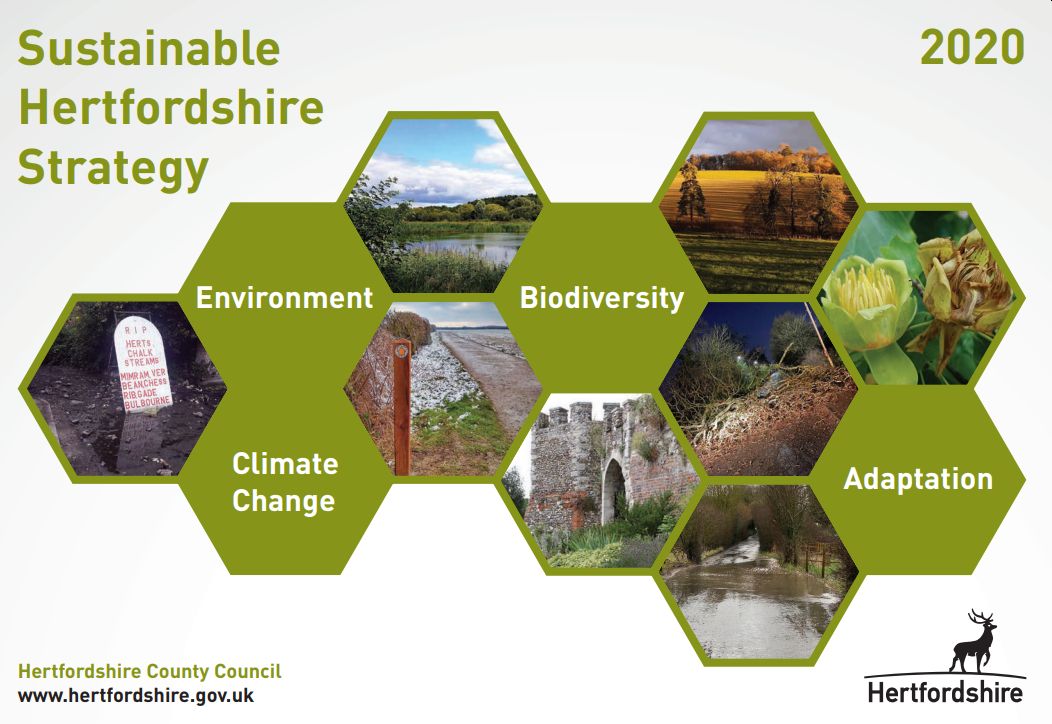
Hertfordshire County Council have developed a Sustainable Hertfordshire Strategy. This will define their action plan to address the climate and biodiversity crises at a county level.
The plan includes actions that can be taken to improve the sustainability of the council’s own estate and operations, and also actions that they will promote to the residents and businesses in Hertfordshire to address issues that the council does not directly control.
The Sustainable Hertfordshire Strategy website includes a top-level strategy document and a more detailed action plan.
We responded to the consultation with two documents, regarding climate change, and a second set of comments regarding biodiversity.
Overall, we welcome the strategy and the investments made so far in setting up the plan. The strategy describes many important steps that have already been achieved. Going forward, we would like to see a much clearer target for net-zero carbon emissions rather than just ‘before 2050’ and a more clearly defined (and costed) plan that gets to this end point.
Addressing emissions related to heat are a key aspect that is largely missing from the strategy at present and Hertfordshire could have a key role to plan in enabling district heating schemes.
Transport is another key concern, particularly as the Hertfordshire corporate plan projects that there will be significant growth in traffic and population in the county, threatening to negate any improvements that might be achieved through promoting walking and cycling.
The Sustainable Hertfordshire Strategy describes a number of valuable achievements so far in promoting biodiversity and we understand that there is a genuine will to improve the county for wildlife. However, the State of Nature report from Herts and Middlesex Wildlife Trust identifies a need for 30% of all land to be managed for nature in order to secure our biodiversity. The action plan so far will not provide this and hardly offsets the steep losses in wildlife that we have seen in recent decades.
